Trajan’s Column – A Roman Triumphal Column In Ancient Rome
A. Sutherland - AncientPages.com - Pillars of victory, also known as memorial columns, were occasionally erected to memorize the triumphs of victorious achievements of an emperor.
They were built to honor an emperor and are generally described as a great victory because the Emperor won in the name of the Roman Empire. They thus acted as propaganda, which would show the Emperor's power to the citizens and secure his legacy.
Left: Column of Marcus Aurelius. Image credit: Marco Assini - CC BY-SA 2.0: Middle: The Column of Phocas, against the backdrop of the Arch of Septimius Severus. Image credit: Jebulon - CC0: Right: The Virgin Mary as the Immaculate Conception carrying a wreath of flowers offered annually by the Roman firemen. Sculpture by Giuseppe Obici on top of the Corinthian Column of the Pagan goddess Minerva. Credit: Monopoli91 - CC BY-SA 4.0
Today there are only a few ancient columns in Rome that survived until our time, for example, the Column of the Immaculate Conception, the Column of Phocas added to the Forum Romanum, an impressive Column of Marcus Aurelius - War Monument From Ancient Rome. Still, Trajan's Column remains the most famous of them.
Even before the imperial era, generals and senators had praised their own more or less heroic deeds by building triumphal arches.
In 113 AD, Emperor Trajan chose something else and instead built, possibly because he wanted to distinguish himself from his predecessors and even recalled by future successors.
The 35 meters (98 feet) in height, massive victory column has always impressed people, and in fact, it still does). A 190-meter-long frieze, ringing 23 laps around the Column, describing Trajan's two victorious military campaigns in Eastern Europe during the Dacian Wars (101-102 AD and 105-106 AD) contributed to its popularity.
The structure is additionally decorated with a large pedestal, ornamented with sculptured trophies on three sides.
The sculpture is one of the most spectacular works of artisans and builders and includes more than 2,500 human figures, besides animals. The artwork of the ancient Roman artists was intended to illustrate the most significant incidents of Trajan's war with the Dacia.
The whole frieze is not visible from the ground, but it was surrounded on three sides by two flanking libraries and the Basilica Ulpia. Among several spectacular features of the Column is a bas-relief that spirals 23 times to the top of the Column.
One of the fascinating features of the monument is the bas-reliefs that depict scenes from the Dacian Wars.
The reliefs that adorn the Column constitute a continuous – approximately 200 meters long frieze that spirals twenty-three times around the shaft, beginning at the bottom with scenes depicting preparation and departure that anticipate the first Dacian campaign of Emperor Trajan.
Trajan's Column, Rome. Image credit: Carole Raddato - CC BY-SA 2.0
No modern equipment was used to build this Column; however, the ancient Romans managed to create many such high structures with the help of using cranes.
The shaft is made from 20 gigantic white or blue-grey marble drums, each weighing approximately 32 tons, with a diameter of 3.7 meters (12.1 feet). Inside the shaft, a spiral staircase of 185 steps provides access to a viewing platform at the top of the Column.
The top block of Trajan's Column weighs 53.3 tons (the heaviest of all), which had to be lifted to a height of approximately 35 meters (115 feet) in the air.
Trajan's column in Rome. Credit: Alvesgaspar- CC BY-SA 4.0
The Italian master builders successfully lifted this gigantic "piece "of stone, and it still stands today. The construction made a great impression on contemporaries, and later emperors began to build their victory columns. Many of them were destroyed with time, but Trajan's famous masterwork survived almost intact. Today it is only missing its original painted decoration, the metal attachments that added detail to the carved figures, and the great bronze statue of the Emperor himself that once crowned the top of the Column. Later, in December 1587/1588, Pope Sixtus replaced the statue of Emperor Trajan himself with that of St. Peter, which remains until today.
The chief architect responsible for the spectacular design of the Trajan's Column was Apollodorus of Damascus. He was the Emperor's favorite and most appreciated engineer and architect, widely known for his other notable building projects in the Roman Empire, such as the Danube Bridge, the first bridge to be constructed across the Danube and a significant feature during the Dacian Wars, among others.
The Trajan's Column (a symbol of glorification) would show the Emperor's greatness and tell a story about successful military encounters.
Most of all, the Column was and is still considered an engineering marvel of the Roman builders due to the immense excavation efforts necessary for its construction.
Updated on June 11, 2022
Written by – A. Sutherland - AncientPages.com Senior Staff Writer
Copyright © AncientPages.com All rights reserved. This material may not be published, broadcast, rewritten or redistributed in whole or part without the express written permission of AncientPages.com
Expand for referencesReferences;
Kalas G. The Restoration of the Roman Forum in Late Antiquity
MacDonald W. L. The Architecture of the Roman Empire
Beckmann M. The Column of Marcus Aurelius
More From Ancient Pages
-
 Galileo Galilei Wrote A Controversial Astronomical Treatise Using A Pseudonym
News | Oct 6, 2022
Galileo Galilei Wrote A Controversial Astronomical Treatise Using A Pseudonym
News | Oct 6, 2022 -
 Impressive Kaymakli Underground City – An Ancient Hiding Place
Featured Stories | Mar 3, 2016
Impressive Kaymakli Underground City – An Ancient Hiding Place
Featured Stories | Mar 3, 2016 -
 Mjölnir: Thor’s Terrible Axe-Hammer And Its Magical Powers In Norse Mythology
Featured Stories | Apr 20, 2017
Mjölnir: Thor’s Terrible Axe-Hammer And Its Magical Powers In Norse Mythology
Featured Stories | Apr 20, 2017 -
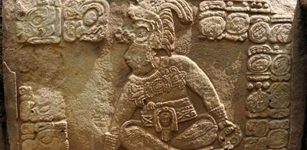 On This Day In History: Maya King Yuknoom Ixquiac ‘Jaguar Paw Smoke’ Assumes The Crown Of Calakmul – On Apr 3, 686
News | Apr 3, 2017
On This Day In History: Maya King Yuknoom Ixquiac ‘Jaguar Paw Smoke’ Assumes The Crown Of Calakmul – On Apr 3, 686
News | Apr 3, 2017 -
 Find Out Which Indigenous Lands You Live On With This Interactive Map Covering The Whole World
Places | Jan 17, 2023
Find Out Which Indigenous Lands You Live On With This Interactive Map Covering The Whole World
Places | Jan 17, 2023 -
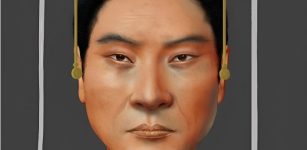 Facial Reconstruction Of Chinese Emperor Wu Who Lived 1,500 Years Ago
DNA | Mar 29, 2024
Facial Reconstruction Of Chinese Emperor Wu Who Lived 1,500 Years Ago
DNA | Mar 29, 2024 -
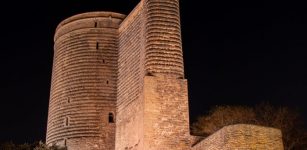 Baku’s Mysterious Maiden Tower – Legend Of The Daughter Of Fire Who Saved The Sacred Temple May Be True
Featured Stories | Jul 5, 2021
Baku’s Mysterious Maiden Tower – Legend Of The Daughter Of Fire Who Saved The Sacred Temple May Be True
Featured Stories | Jul 5, 2021 -
 On This Day In History: Battle Of Ayacucho Was Fought In Peru – On Dec 9, 1824
On This Day In History | Dec 9, 2016
On This Day In History: Battle Of Ayacucho Was Fought In Peru – On Dec 9, 1824
On This Day In History | Dec 9, 2016 -
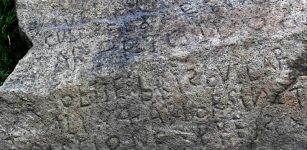 Mysterious Rock Inscription Found In Brittany Baffles Experts – Reward If You Can Decipher It
Archaeology | May 15, 2019
Mysterious Rock Inscription Found In Brittany Baffles Experts – Reward If You Can Decipher It
Archaeology | May 15, 2019 -
 Early, Complex Brain Surgery Performed In Ancient Greece
Archaeology | Apr 8, 2020
Early, Complex Brain Surgery Performed In Ancient Greece
Archaeology | Apr 8, 2020 -
 13,000-Year-Old Eye Needles Made By Early North Americans Discovered
Archaeology | Dec 2, 2024
13,000-Year-Old Eye Needles Made By Early North Americans Discovered
Archaeology | Dec 2, 2024 -
 Cnut The Great – England’s Danish King And Ruler Of One Of The Largest Nordic Empires
Featured Stories | Jun 15, 2020
Cnut The Great – England’s Danish King And Ruler Of One Of The Largest Nordic Empires
Featured Stories | Jun 15, 2020 -
 Early European Farmers Traced To Anatolia, DNA Study Shows
Archaeology | Jan 5, 2016
Early European Farmers Traced To Anatolia, DNA Study Shows
Archaeology | Jan 5, 2016 -
 What Happened To The Pythagorean Brotherhood?
Ancient History Facts | Apr 5, 2021
What Happened To The Pythagorean Brotherhood?
Ancient History Facts | Apr 5, 2021 -
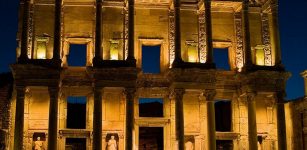 City Of Ephesus And Celsus Library With More Than 12,000 Scrolls
Featured Stories | Sep 17, 2015
City Of Ephesus And Celsus Library With More Than 12,000 Scrolls
Featured Stories | Sep 17, 2015 -
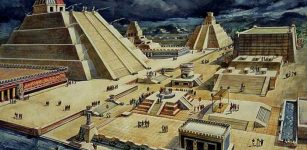 On This Day In History: Massacre In Great Temple Of The Aztec Capital Tenochtitlan – On May 20, 1520
News | May 20, 2016
On This Day In History: Massacre In Great Temple Of The Aztec Capital Tenochtitlan – On May 20, 1520
News | May 20, 2016 -
 Kofun: Megalithic Keyhole-Shaped Tombs That Belonged To High Status People In Japan
Civilizations | Oct 31, 2018
Kofun: Megalithic Keyhole-Shaped Tombs That Belonged To High Status People In Japan
Civilizations | Oct 31, 2018 -
 Mystery Of The Tarim Basin Mummies Continues
Archaeology | Oct 27, 2021
Mystery Of The Tarim Basin Mummies Continues
Archaeology | Oct 27, 2021 -
 How Did Ancient Civilizations Make Sense Of The Cosmos And What Did They Get Right?
Civilizations | Mar 7, 2022
How Did Ancient Civilizations Make Sense Of The Cosmos And What Did They Get Right?
Civilizations | Mar 7, 2022 -
 Unexplained Mystery Of The Ship Of Horror – An Unsettling Story
Featured Stories | Aug 22, 2024
Unexplained Mystery Of The Ship Of Horror – An Unsettling Story
Featured Stories | Aug 22, 2024



